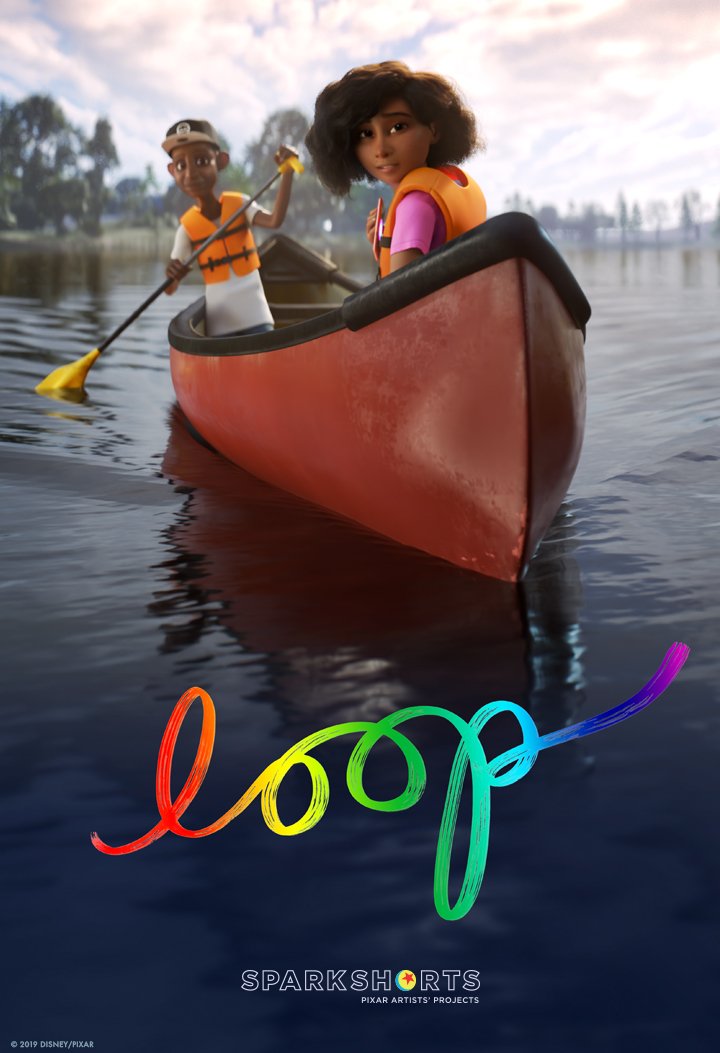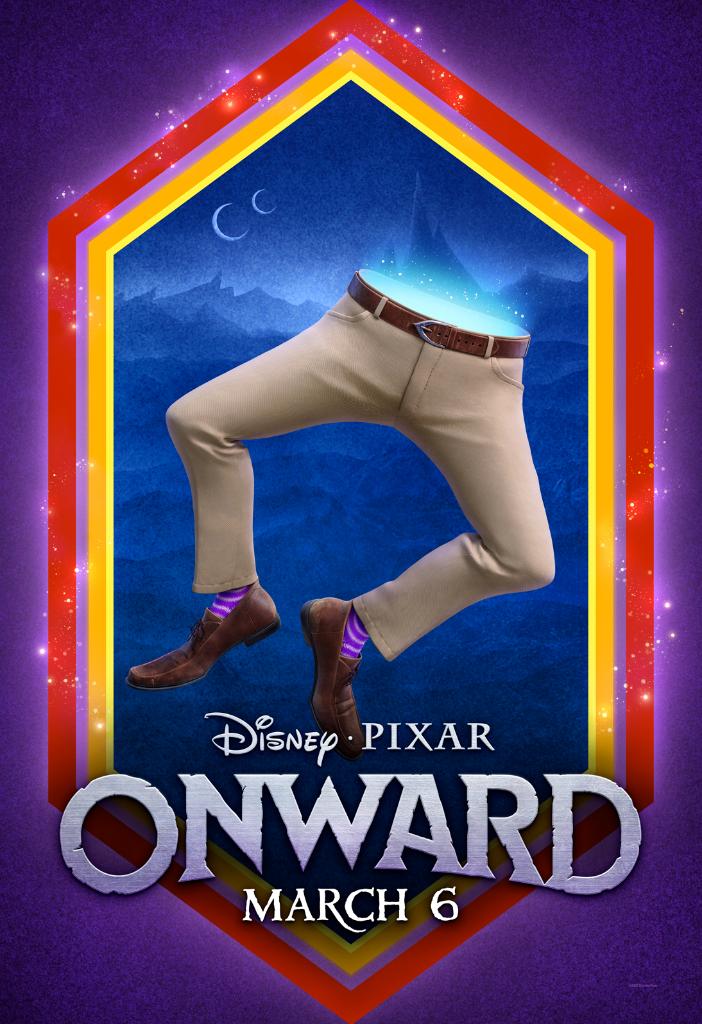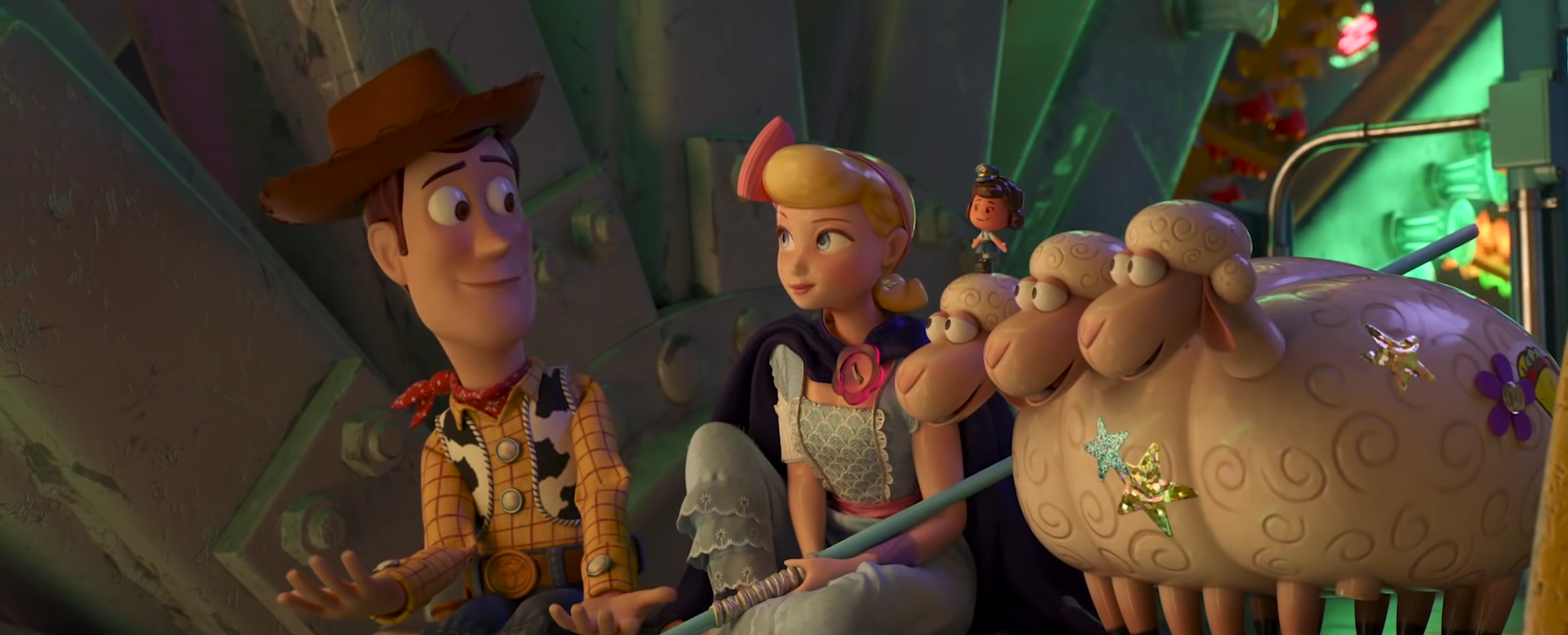When “Loop” premiered on Disney+ a few weeks ago, I watched it three times in a row. (As of this posting, my view count is now at five). It’s the first Pixar release of 2020, and I can’t think of a better one to hold that distinction. It represents another first as well: one of the protagonists is autistic and nonverbal. Her name is Renee. I remember really liking her design the first time I saw the poster last year. All that hair!
“Loop” is Pixar’s second SparkShort about autism, but this time, there are no metaphors or magic. Renee’s autism isn’t portrayed as a mysterious gift. This short is extraordinarily simple – we spend one bright and sunny afternoon with two teenagers in a canoe. Marcus is Renee’s partner. He is not autistic and seems nice enough, although he is reluctant to be paired off with Renee, referring to her as “that girl who doesn’t talk.” Their continuous loop around the lake is fairly uneventful at first, but that’s why I find it so compelling. It’s just two kids with vastly different experiences of the world learning to communicate with one another.
Also available on Disney+ is “The Making of Loop.” It details how the filmmakers, led by director Erica Milsom, worked with The Autistic Self Advocacy Network to bring this story faithfully to the screen. One way they achieved authenticity was with the casting of Madison Bandy, a nonverbal autistic actress, as Renee. Girls are largely under diagnosed with autism, and we might be tempted to associate it with boys only. But for a Pixar film to center a nonwhite autistic girl is really making strides in the realm of representation for both the studio and media in a broader sense. It’s also cool that both characters in “Loop” are nonwhite, with Marcus having dark brown skin.
It’s evident just how passionate Milsom and her team were to tell this story in such an honest way. Marcus is well intentioned, but his plans go awry, and he becomes frustrated. He doesn’t know how to communicate with Renee, but he does give her some space. He learns to be patient. We’re able to sympathize with him. Not once are we meant to pity Renee; rather we identify with her; see and hear the world through her eyes and ears. A great moment in “Loop” occurs when Marcus tells her, “I hear you.” Just because she can’t talk doesn’t mean we shouldn’t listen.
One of my nieces is on the autism spectrum, and she struggled a lot with sensory overload when she was younger. That scene in the short where Renee claps her hands to her ears was so immediately recognizable to me, because my niece would always do the same when she was overwhelmed by noise. I am not autistic, but Renee hiding under the canoe was deeply relatable to me. I’ve never done that, but I understand the need to. The comfort she draws from listening to her ringtone, a continuous looping sound, is also something I could relate to: I’ve listened to the same song on repeat when I need comfort, or need to calm myself down.
“Loop” just radiates so much compassion, color, and warmth.

“Loop” is dedicated to Adam Burke, who also has a story credit on the film. Read this Forbes interview with Milsom and producers Michael Warch and Krissy Cababa for more insight on this beautiful little story.
Click the banner below for more of our SparkShorts reviews.
Looping through colors and sounds


Simoa
Simoa (Elliefredricksen) is Editor in Chief of Upcoming Pixar and an aspiring Pixar heroine. She joined Upcoming Pixar in 2014 and is always excited to see how her favorite animation studio changes and grows.






It’s so cool that this short features an autistic character. I’ve always wanted an autistic Disney character, so this is a dream come true!